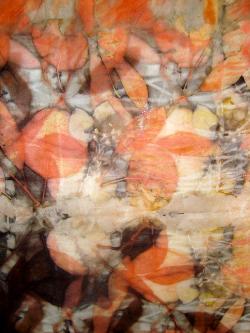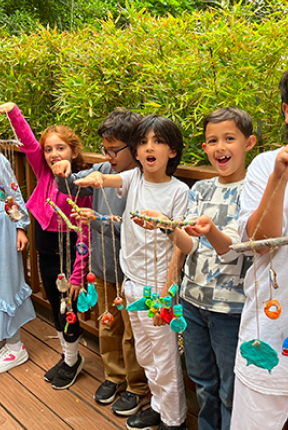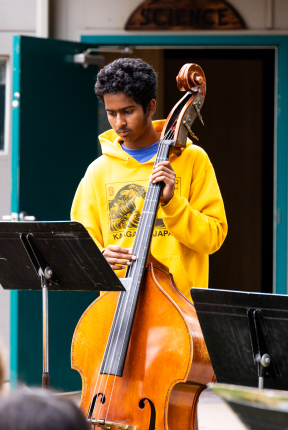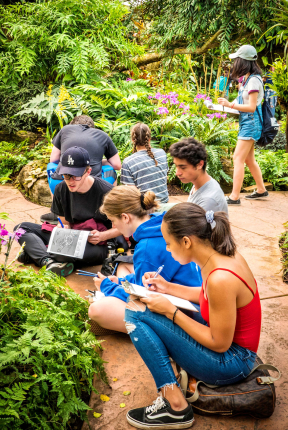Mona Lewis shares what’s been taking place over the summer in preparation for handwork classes in the new year.
Dear Parents and Friends of Highland Hall,
I recently came across this little quote, and it became the theme for my summer:
A manifesto for A SIMPLE LIFE:
Eat Less, Move More
Buy Less, Make More
Stress Less, Laugh More
Feel Blessed, Love more
Find a Quiet Spot Everyday and
BREATHE
My summers begin by preparing beautiful plant dyed yarns for the children to use in their handwork in the new school year. As many of you know, using local natural sources for the dye pigments has become a real passion for me. Last summer, California Sagebrush became the base for all the warmer colors in our yarn palette. This summer, discovering the magic of our local Eucalyptus has colored my world and will also show up in much of the children’s yarn. The range of colors is just amazing!
There are so many species growing abundantly all around us, and each one offers the possibility of another hue. (There are more than 600 species of eucalyptus, with most found in the tree’s native Australia and 284 appearing on the U.S. Department of Agriculture’s database of native-growing plants.) With some natural modifiers, the dye colors range from olive greens and browns, to gold, orange and apricot right through to purple and even black. The colors can be soft and subtle, or startlingly bright, but they all take one’s breath away. I am delighted to say that all the yarns used by our first graders to knit Lions and Lambs and by the second graders for Bears have been dyed with our local Eucalyptus this year.
In addition, many of the pinks, oranges, reds and violets in our yarn palette have come from locally harvested cochineal bugs. These are scale insects which live on the paddles of cactus. (Yes, I did it myself. It was not hard, there is so much of it, and seems to replenish itself on the cactus within two weeks.)
I had the great pleasure of doing some interesting plant dye projects with the children in our summer camp as well. We harvested flowers, used indigo and cochineal, cut and stitched, making several beautiful items. It was a fun week and we were all enchanted by the rainbows that appeared on our silk! (Thanks to our Spanish Teacher, Gabriella Hydle for these photos.)
Summer reading brought some sad news… An article in the New York Times told of lives lost in Bangladesh when a garment factory collapsed. Rivers ran purple with toxic dyes and children in the nearby school were nauseated and unable to work because of the fumes. It seemed tragic, but so far away. Then I realized that I see those garments in the windows each time I shop certain big stores at the mall. It made me think twice. I wondered, “What are the other options?” While I don’t see a way to revolutionize the garment industry at the moment, I can imagine exploring possibilities that reflect my values: wearing something made with care and appreciation for life and the world we live in.
And so, I made a lot of clothing this summer.
Just becoming more aware and finding new sustainable colors feels right. Sharing the pleasure of these colors and their sources with the children feels amazing. While I will not be telling them stories of tragic waste, I will be sharing stories and traditions that hold the beauty of our earth in esteem. Our children will grow up having this kind of information in addition to all the other things they learn at Highland Hall. This alone is enough for me.
The cherry on the cake this summer was the manifestation of the long-dreamed-of plant dye garden on campus. Three beautiful beds have been built on the school farm right next to the wood burning oven. One bed will be dedicated to the fibers we study in the third and fifth grades. One will be devoted to dye plants used before the discovery of synthetic dyes – the traditional dye plants used in Europe and Asia. And the center circular bed will be filled with dye plants that are native to California. The students will have the opportunity to see and tend these gardens, and learn to gather colors from the leaves, flowers and roots. Perhaps soon, even the indigo blues will come from our own back yard.
Also, if you are interested in seeing the Eucalyptus on silk, I have placed a few items in the Treehouse for your pleasure. Please look for them when school reopens in a few short weeks!
Words cannot say how fortunate I feel to have this work with your children at our wonderful school. My heartfelt thanks goes out to all of you whose support makes these efforts possible: The Garden Gnome Society, Nitza Bernard, Lynn Kern, and all the amazing and devoted parent volunteers. You make all the difference!
With my love and appreciation,
Mona Lewis
Handwork Teacher
Highland Hall Waldorf School






